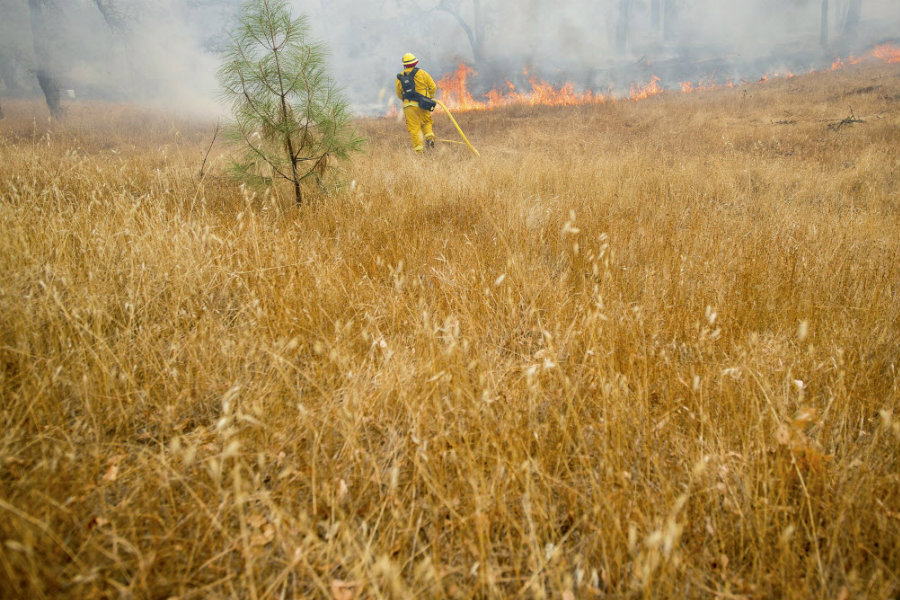How can Middletown rebuild from Valley Fire? A nearby town offers clues.
Loading...
| Los Angeles
For Middletown, Calif., the hope for a return to something like normal is only now beginning to take hold. After destroying half the city, a fire that has astonished experts for how quickly it spread last weekend is finally showing signs of coming under control. The Valley Fire was 15 percent contained Tuesday, state fire officials said.
But about an hour south on Route 29, in the bosom of California wine country, a new normal has settled in a completely different way. On Aug. 24, 2014, an earthquake hit the town of Napa at 3:20 in the morning. In subtle but important ways, the town hasn’t been the same since.
At the backyard neighborhood gatherings of harvest parties this autumn, the talk isn’t just about land yield or grape types. There is earnest sharing about which bolt or cable is best to secure a bookcase to the wall.
And there is a lesson in that for the city of Middletown, the state of California, and to some degree the entire American West, say experts. The quake sent a message that Napa has heeded: We need to be prepared for everything.
“The quake really awakened the community to the need to be ready for all kinds of disasters,” not just quakes, says Juliana Inman, an architect who has been on the Napa City Council for nearly nine years.
Often, it takes a disaster to move a community to action, says Louise Comfort, director of the Center for Disaster Management at the University of Pittsburgh. Napa, she says, is an example of a city where residents learned from a disaster and placed a priority on broadening those lessons.
Citizen buy-in is the crucial first step in preparing a community for the unexpected. “The fire threat in California – well known, well documented – is a critical public policy question, and it hinges exactly on the amount of resources citizens are willing to grant government agencies to protect them and their property when they cannot do it themselves,” Ms. Comfort says.
In many cases, it comes down prioritizing emergency preparedness in the budget.
One of the first actions the Napa City Council undertook was to increase the city’s budgeted reserves for disaster management by nearly 20 percent. Funds for training as part of the emergency response program were more than quadrupled to $30,000.
In the past year, fire battalion chief Steve Brassfield, who manages the Napa emergency response program, has been called by neighboring communities such as Sonoma and Vacaville to share lessons about disaster preparedness from the 2014 quake.
“We learned a lot of things from that quake,” he says.
One of the most important was the need for good communication. “We found that the typical communication problems keep coming up,” he says. This includes on-the-ground communication during the first hours of a disaster, during which emergency personnel often have trouble coordinating efforts.
Communication with residents is equally important, Mr. Brassfield says. The town has signed up for the Nixel program, which sends cellphone text messages with crucial emergency information. Napa also participates in the NextDoor social media application that allows neighborhoods to communicate in a closed online social media system to share information.
“Our community is certainly more wary of emergencies,” says Napa City Council member Mary Luros by e-mail. “We learned our lesson about always keeping shoes and a flashlight by your bed, having an emergency kit, and most importantly, having an emergency plan.”
Even now, with the Valley Fire still burning, residents of Middletown and its surrounding areas can take steps to lessen the danger. “Communitywide protection is key, but small changes on a home easily make them much more difficult to ignite,” says Michael Gollner, assistant professor in the department of fire protection engineering at the University of Maryland in College Park.
These include brush, tree, and litter clearance around houses and sealing roof eaves so embers cannot be pulled into attic spaces where they can ignite the entire house.
“It's hard to make something 100 percent fireproof, but small changes can make a big difference,” he adds.







